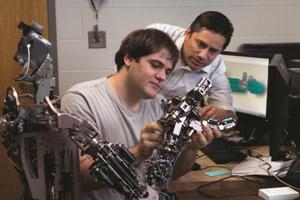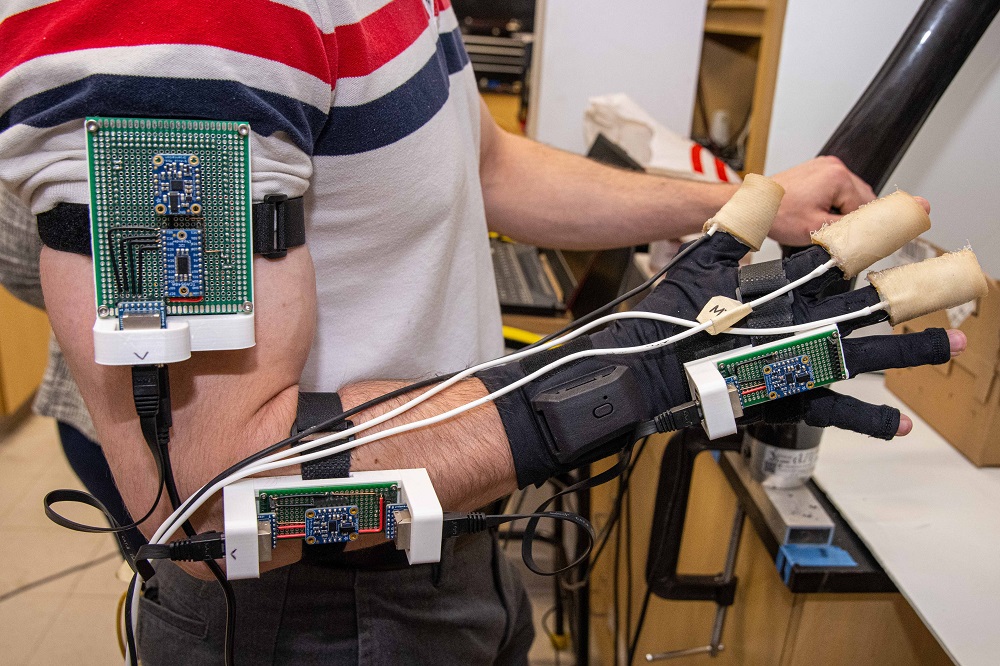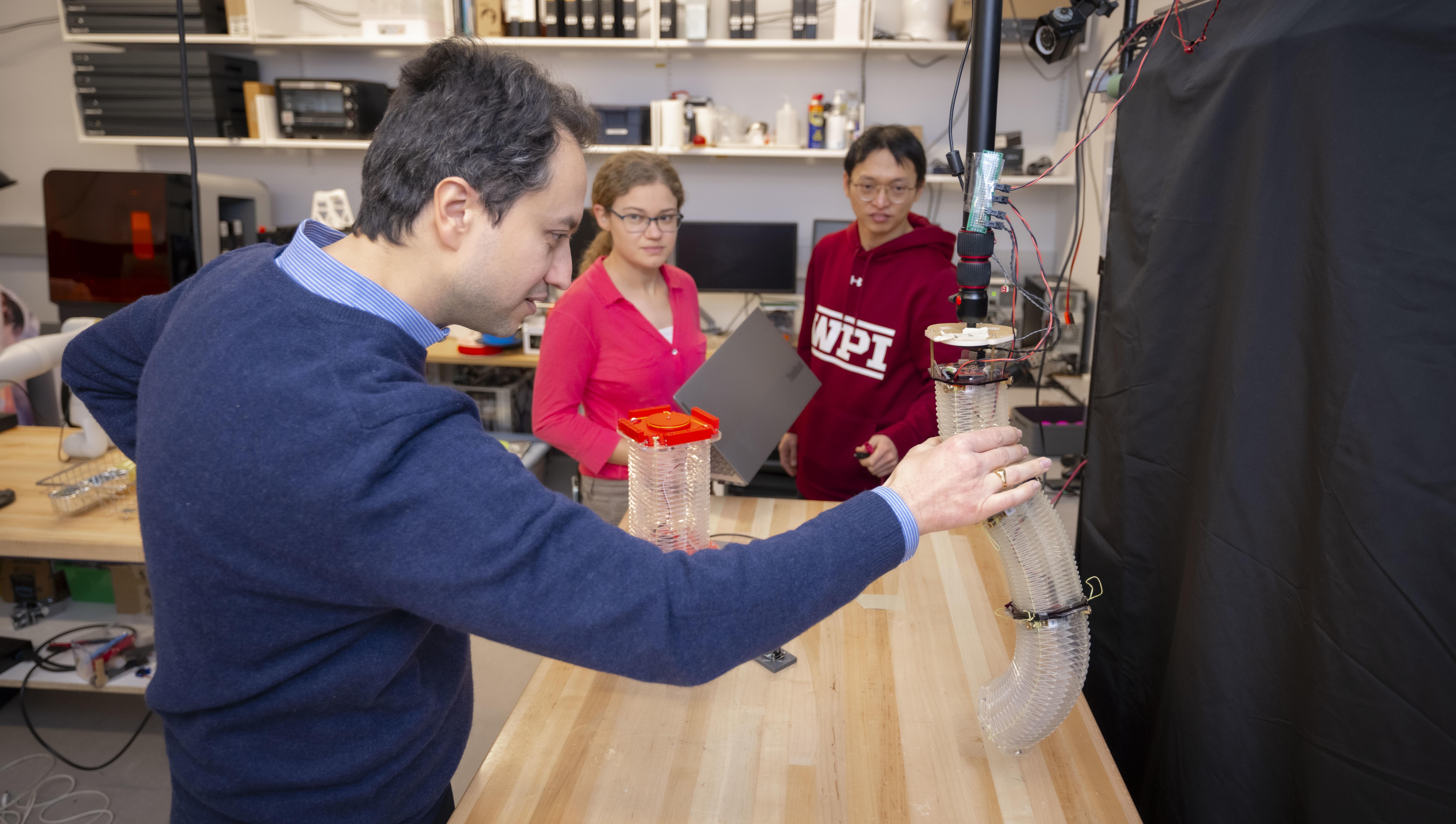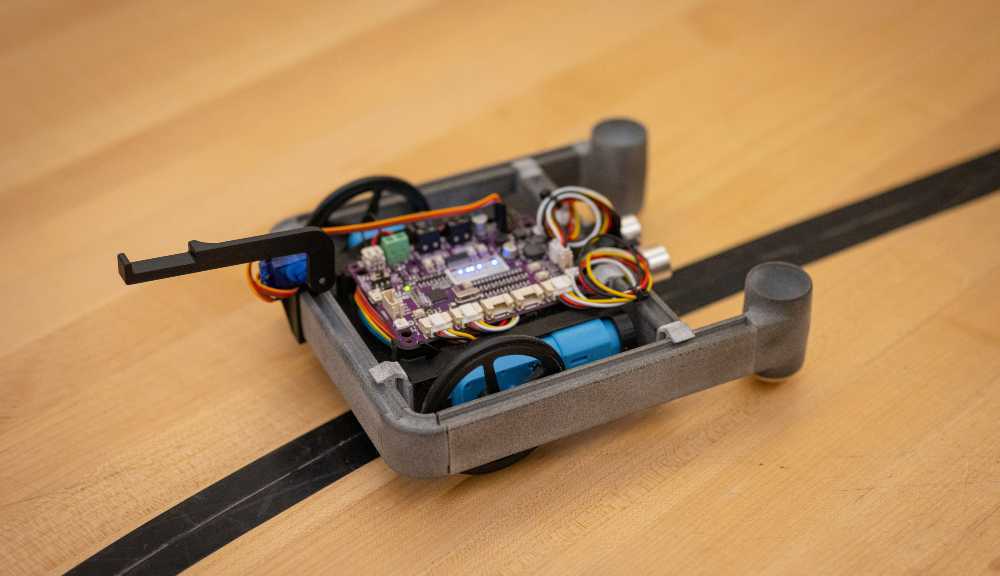
Torres-Jara, right, and Ennio Claretti '13 with a robot
hand equipped with sensors that give it the sense
of touch.
Eduardo Torres-Jara, assistant professor of computer science and robotics engineering at WPI, is inspired by nature—particularly by the exquisite tactile sensors that allow people to feel and manipulate objects with grace and precision.
He has developed sensors for robots that, much like our fingertips, are soft and flexible and can conform to objects they encounter. And like our fingers, they contain a network of sensors that can detect forces in multiple axes and provide feedback that can help a robot determine the size and shape of the object, know how firmly it is being grasped, and tell whether it is being deformed as it is gripped. The sensors, made from silicon and fairly simple electronics, are also inexpensive and easy to manufacture.
Giving robots the sense of touch does more than make them adept at handling objects and performing delicate feats of manipulation. It can also transform how robots learn to perform new tasks. Tactile feedback gives robots a better understanding of the world around them and allows them to rely more on their senses, and less on rigid programming, as they do their jobs—much as we do. "Robots that are detached from the world can't perform tasks as well," Torres-Jara says. "By enriching the input from sensor feedback, we will move artificial intelligence forward."
- Read more about Eduardo Torres-Jara's work in WPI's research magazine.
- Watch a video about his research.
- Read this column in the Boston Globe to learn about a new company he has founded to commercialize his innovations in sensitive manipulation for robots.
- Read more about Torres-Jara's research on sensitive manipulation in NASA Tech Briefs.


